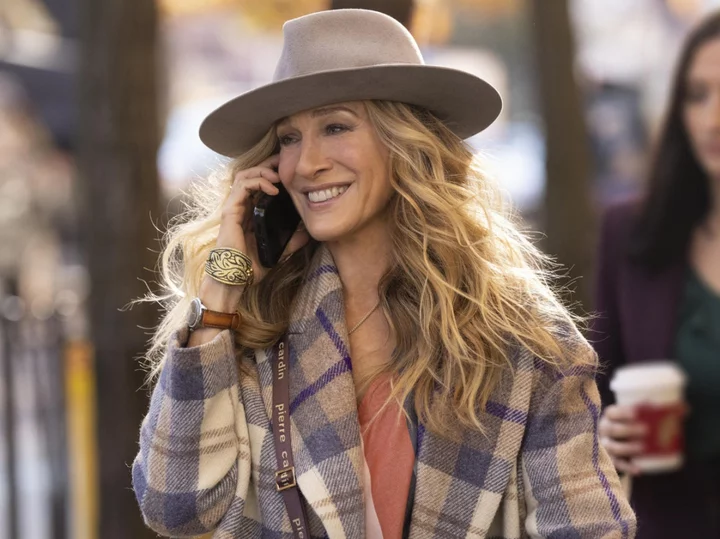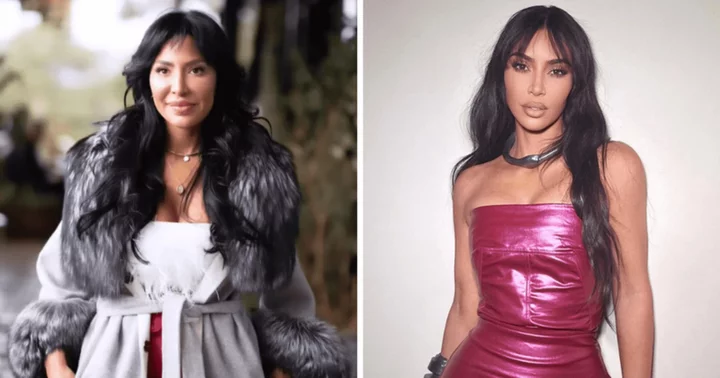I recently went to a new salon for a haircut and felt a little anxious. I didn’t know my stylist, but the bigger problem was that I didn’t know exactly what I was asking for. I didn’t have time to source inspiration images, and I felt the vibe I communicated was pretty vague: I was after more than just a trim, but wanted to keep my hair long for the remainder of the summer.
Going into the appointment, I made a conscious decision to make one small request at the jump. When I sat down in the chair for the “So, what are we doing today?” talk, I asked my stylist, Chloë Pasi, if she could cut my hair dry.
A dry haircut is nothing new or groundbreaking. In the past, I’ve had my hair cut both sopping wet and bone dry. Though usually when I get my haircut in New York, it’s a hybrid where the first half of the appointment involves a routine post-shampoo cut on damp hair, then it gets dried and the face-framing layers get addressed when the hair is fully dry as a form of precision “finishing.” However, this is the first time I made a specific request for a fully-dry haircut and now I have a good handle on its merits.
What is a dry haircut?
A dry haircut is a haircut on dry hair, as simple as that. There are specific instances when a dry haircut is required. For example, if you ask for a “dusting,” the stylist’s objective is to trim (or dust off) split ends without taking off any length. It’s a technique for people looking to grow their hair longer and keep it healthy. But you can’t see split ends on wet hair, so the cut has to be dry. Another common example of a dry haircut is a curly cut, which is best performed on dry hair because if you have curls you know that a wet curl has a good three inches of length on a dry curl. To appreciate the curls and how they spring, you want to cut the hair when it’s dry for optimum precision.
In my case — not after a dusting or a curly cut — I was getting a dry cut to have control over the process. First, I had my hair shampooed, conditioned, and towel dried (you still get your hair washed during a dry cut, which is important because a salon shampoo is something special). Then Pasi used a blowdryer and a round brush to rough dry my hair straight, without any added bounce or body, but just to get it dry. Then, she sectioned the hair and started the cut.
What are the benefits of a dry haircut?
The obvious pros are keeping length to your hair and getting a more precise finish. “There are a lot of [people] who prefer dry cuts if they don’t want to lose a lot of length — it gives them a better sense of control,” explains Pasi. “A lot of people with a curl to their hair prefer to get a dry cut because you can see the shape when you cut the hair dry as opposed to wet because the curls spring. Everyone has a different pattern and it’s easier to see the shape when it’s dry.”
But there’s also the factor of damage visibility. “If you’re someone with damaged hair, most stylists will want to cut the hair dry so that they can really see where the damage is,” explains Michelle Hong, the owner and founder of NYC The Team hair salon. Pasi cosigns. “Wet hair hides a lot,” she explains. “So when I dry cut someone’s hair, I notice things that I might have missed if it was a wet haircut. Like, maybe someone has thinning or breakage in certain sections, which is super common if they burned their hair with a curling iron or something — even if it happened years ago, I can tell when their hair is dry how certain sections of hair lay differently.”
The biggest benefit of a dry haircut, in my experience, is there are no surprises. Pasi started with the bottom layer of hair, taking small sections she point-cut the ends. Point-cutting removes bulk from the hair’s ends, allowing layers to be built in seamlessly. Throughout the process, I could see exactly how the hair was falling and decide on the exact length I felt comfortable with for the ends and the layers. “It allows you to be more cautious because you can always take more hair off, but you can’t put it back on,” Pasi explains. In comparison, when my hair is cut damp, I almost have to visualize how the length will change when it’s dry, so the dry technique takes out that guessing piece — and the anxiety that comes with it.
When is a wet haircut a better idea?
There are lots of benefits to a dry haircut, but it might not be for every single haircut. In some cases, starting with wet hair might be beneficial and it’s really dependent on the person and what they’re asking for. “If I need to take a lot of weight out of someone’s hair, I would usually want to start it wet,” explains Pasi. “For someone with thick, dense, coarse hair, it’s easier to start taking weight out when it’s wet and then go in with precision and texturizing when it’s dry.” That said, Pasi asserts that even a wet haircut should have a dry element. “When you finish with a dry haircut, the haircut will last longer [and will grow out nicely] because you’re refining it, softening it,” she explains. This is especially true if you’re cutting layers or bangs which require more precision.
How much does a dry haircut cost?
There’s no difference in cost between a wet and a dry haircut. “A haircut is a haircut at the end of the day,” says Pasi. It’s really just a matter of preference. “You’re still getting the shampoo and the blowout. I would never let someone leave without getting their hair washed — that’s kind of the best part,” she says.
At the end of the cut, Pasi added some bends with a curling iron to give my straight hair a little bounce and texture. (At home, I’d probably add bends with a flat iron to give more of a lived-in, crimped effect.) The cut was exactly what I wanted. It’s a great learning for future haircuts because I’m thinking about going pretty short in the fall, and I know I’ll feel more comfortable with a change if I can see exactly what’s happening on my hair in its dry state.









